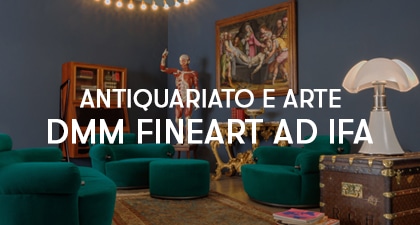
In these difficult and dramatic times, I want to present to you this beautiful “Urban Landscape” by Francesco Arata. It is a truly unusual painting, different from everything we know of his extensive body of work.
Arata is known as an excellent painter, highly skilled in the production of still lifes, nudes, portraits, and numerous landscapes. From Cremona, he was active in Milan, where he studied and began his career, in Venice and Burano where he worked in the 1930s, and in Castelleone, his hometown, where he returned in 1934. He was able to draw in his own unique and original way from the Novecento movement, and in particular, from Carrà, he adopted a mystical, magical, and spiritual approach to depicting Nature, while from his friend Tosi, he grasped the intimate ability to interpret reality. We are used to his beautiful clear, colorful, and serene landscapes, capturing views of the Lombard mountains or Ligurian beaches, or his hometown of Castelleone, or the magnificent Venice. But here… we see a large industrial complex, painted imaginatively, although very close to historical images of the Falck “Unione” steelworks in Sesto San Giovanni, a well-known Lombard steel factory.
What we immediately perceive when looking at the painting is the powerful positive energy it emanates.
The industrial complex seems almost alive, like a gigantic productive engine at the service of humanity. Around the industrial area, a road runs with few cars; the colors are bright, and the compositional stroke is both quick and calm. I see small human figures walking calmly in what is not perceived as an excessive or dangerous place, but as a hub of vigorous productive vitality.
And again, in the background, through the smoke, the landscape can be seen distinctly, also painted with light and serene colors, almost delineating a peaceful Nature that is completely unconcerned with the actions of man. In the bottom right, Francesco signs his name and adds the date: 1948… These are the years after the war; after the horrors and destruction that humanity had never before witnessed, Francesco Arata paints here a piece of a city that has restarted, that produces, that generates goods, and contributes to the rebirth of an Italy of peace and prosperity. We perceive his desire to instill optimism, to believe in humanity’s ability to rebuild.
I like to think that our rebirth can grasp and embrace the trust in the future that Arata gives us.
At the same time, I would like to think of a different kind of well-being, one that does not rely only on production and consumption mechanisms, but that knows how to care for the Nature around us and that can listen to its messages. We must draw inspiration from everything we’ve experienced: “care” is the word we must remember. Some have practiced it on the front lines, in hospitals, without regard for fatigue and personal risks. But everywhere we have seen acts of deep and generous altruism, highlighting the enormous value of human connection, precisely at a time when connection seemed impossible.
And so, I still think with gratitude about Francesco Arata’s painting, about his ability to look to the future with confidence in humanity and its innate thirst for a better life.












